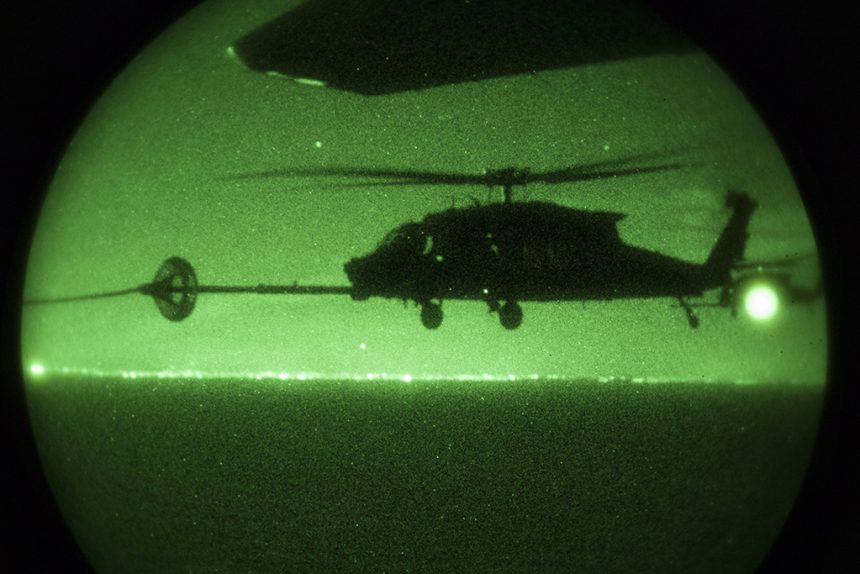Five crew members aboard a Black Hawk of the U.S. Army 160th Special Operations Aviation Regiment have died in the crash of a Special Operations helicopter off Cyprus.
In the evening of Nov. 10, 2023, a U.S. aircraft crashed in the eastern Mediterranean Sea.
NICOSIA ATC asking EDGE60 about a possible helicopter down 30 miles SE of Larnaca, Cyprus last night. https://t.co/rmBdycw1IJ
— Thenewarea51 (@thenewarea51) November 12, 2023
Little information about the incident was released by official sources. U.S. EUCOM said: “On the evening of November 10, a U.S. military aircraft conducting training operations in the eastern Mediterranean suffered a mishap and went down. Out of respect for the families affected, we will not release further information on the personnel involved at this time. The cause of the training incident is currently under investigation.”
To nip any type of weird speculation in the bud, the official release added “However, we can definitively say that the aircraft sortie was purely related to training and there are no indications of hostile activity. We will provide more information as the situation develops.”
In other words, although it didn’t disclose many details (not even the type of aircraft – a bit unusual for such incidents), the U.S. Command wanted to make it clear that the mishap was not caused by combat-related activity nor enemy actions.
On Nov. 13, the U.S. Department of Defense identified the five soldiers who were killed in the crash of the MH-60 helicopter of the 160th SOAR: Chief Warrant Officer 3 Stephen R. Dwyer, 38, of Clarksville, Tennessee; Chief Warrant Officer 2 Shane M. Barnes, 34, of Sacramento, California; Staff Sgt. Tanner W. Grone, 26, of Gorham, New Hampshire; Sgt. Andrew P. Southard, 27, of Apache Junction, Arizona; and Sgt. Cade M. Wolfe, 24, of Mankato, Minnesota.
According to the Pentagon, the MH-60 was conducting aerial refueling training when the aircraft experienced an in-flight emergency resulting in the crash.
The 160th SOAR (Special Operations Aviation Regiment) is a highly-specialized combat aviation unit headquartered at Ft. Campbell, Kentucky. The Night Stalkers support elite U.S. and coalition combat units like Army Special Forces, Naval Special Warfare (SEALs) and other special operations units. 160th SOAR mainly operate at night (hence their name) in attack, assault, reconnaissance, infiltration and exfiltration, and any kind of known or unknown special operations you may imagine.
The Night Stalkers have operated several different Black Hawk variants. Currently, they operate the MH-60M in two roles: Assault and DAP (Defensive Air Penetrator), with the latter employing the gunship variant.
Here’s what we wrote about the unit when we published some rare images of the Night Stalkers training in plain daylight close to the Dam Neck Annex of Oceana Naval Air Station, Virginia.
The U.S. Army’s 160th SOAR specializes in night flying at low altitude for clandestine insertions into denied areas. Aircraft flown by the Nightstalkers have an exotic communications and sensor suite on board accounting for the massive number of antennae and vision systems protruding from the helicopters. The MH-60M Blackhawks have a dazzling array of special secure radios, sensors and satellite communications on board. They include the AN/ARC-201D single channel ground and airborne radio system (SINCGARS), four onboard Raytheon AN/ARC-231 Skyfire radios, two of them equipped with satellite communications capability, two AN/ARC-220 high frequency radios, an MTX Blue Force Tracker to prevent accidental friendly fire engagements. The nose of the MH-60M also features the Raytheon AN/APQ-187 SilentKnight radar for terrain-following at low altitude at night and the Raytheon AN/ZSQ-2 EOSS electro-optical (EO) and infrared (FLIR) cameras for night vision. Nightstalker pilots are also the most proficient aviators in the world at dangerous low-altitude, night vision goggle flying.
The unit is also quite famous for the mission to capture Osama bin Laden, Operation Neptune’s Spear, on May 1, 2011, a raid during which the Night Stakers flew a classified, low-observable variant of the Blackhawk helicopter that has since been popularly referred to in speculation as the “MH-X Stealth Black Hawk” or “Silent Hawk”.
MH-60s of the Night Stalkers regularly train to carry out HAAR (Helicopter Air-to-Air Refueling) with U.S. Marine Corps KC-130Js at home and abroad.
We don’t know where the MH-60 had launched from: since it crashed off Cyprus it seems reasonable to believe it was deployed to RAF Akrotiri, Cyprus, where a number of C-17 flights have been observed in the past weeks, following the war between Israel and Hamas. However, we can’t completely rule out it took off from another base in the region or a U.S. warship (the Ford Carrier Strike Group is in the area).
U.S. special operations forces have been moved to the region, as part of a contingency planning around the crisis in the Gaza Strip, and readied in case an evacuation of US citizens from the region is ordered.









